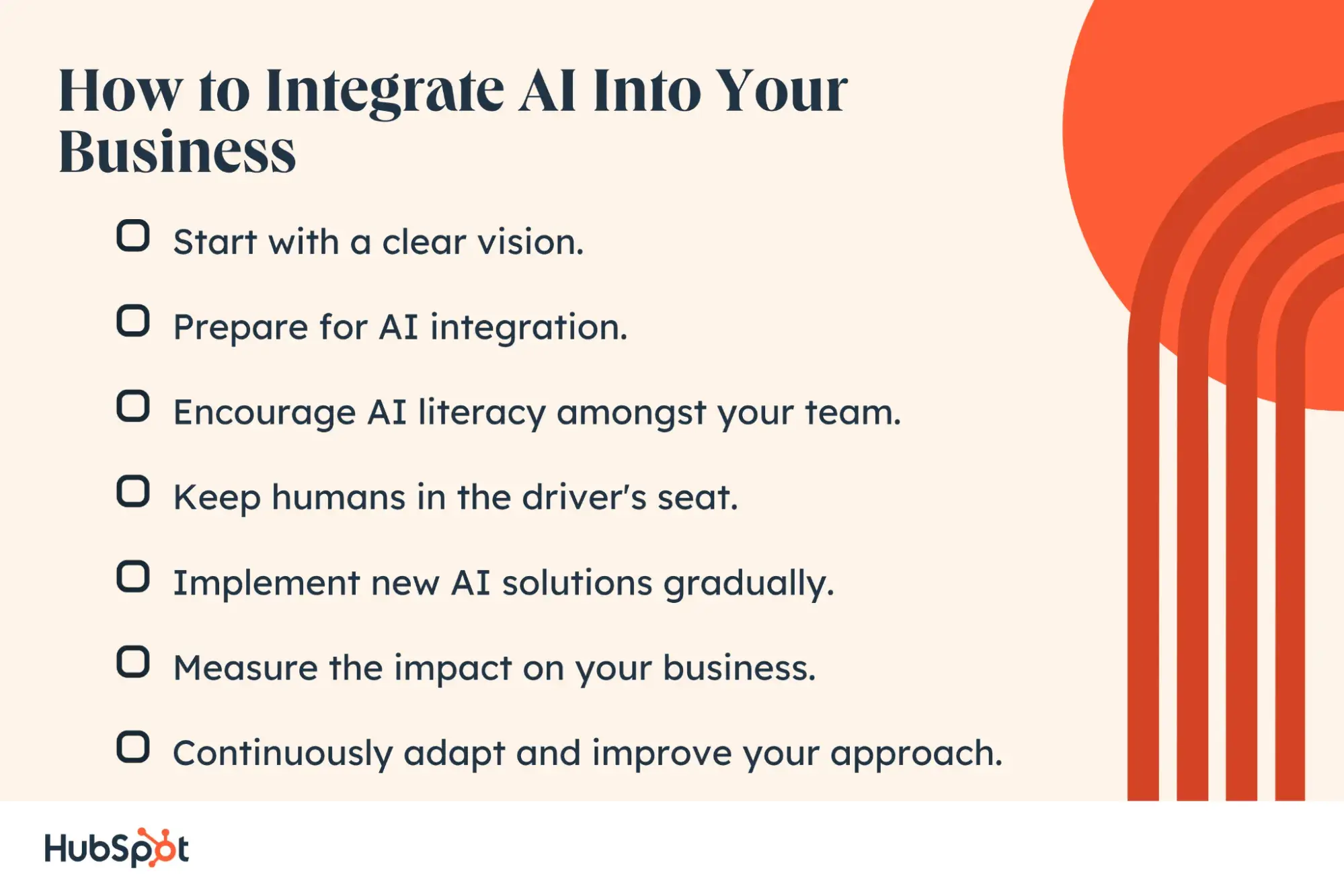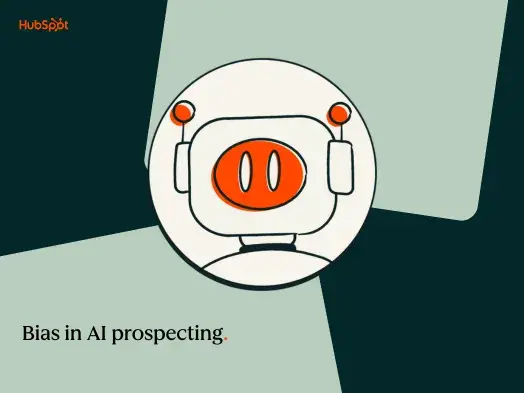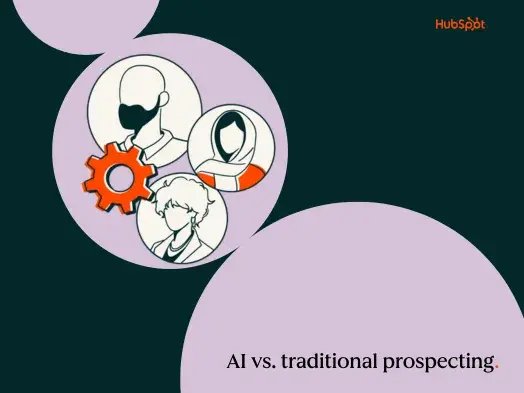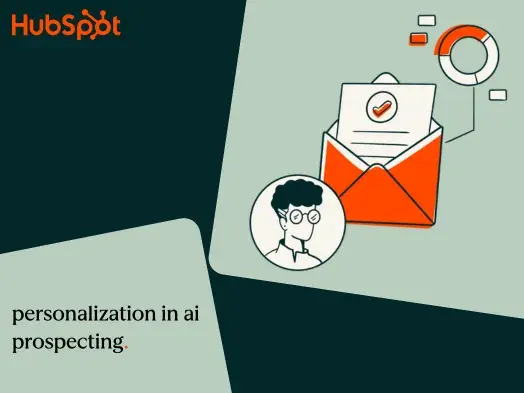AI … Will it decimate the human race? Replace the workforce entirely? Or will it dissipate into the ether, not with a bang, but with a whimper? As with many issues of our time, somewhere between the hype and speculation lies the truth. When it comes to AI business integration, specifically, the truth is surprisingly moderate.
Beyond my own experience, I’ve spent a ton of time interviewing others actively using the tech. And here’s the general, hype-free consensus: Yes, AI can improve business operations and help you scale. Nope, it won't replace your human workforce and the ingenuity that they bring. (At least not yet — dun-dun-duuun!)
But the real kicker is how you implement the technology. The kicker before that? Whether you should implement it in the first place. So, without further ado and in the true spirit of AI, let‘s ’delve' into the topic at hand. You can expect juicy insights from AI experts aplenty as I cover:
- Why integrate AI into your business?
- How to Integrate AI Into Your Business
- Challenges of AI Business Integration
- Tips for Integrating AI Into Your Business
Download Now: 100 ChatGPT Prompts for Marketers
[Free Guide]
Why integrate AI into your business?
From FinTech to SaaS, I’ve gathered use cases for integrating AI into your business based on specific industry categories. However, you could apply most, if not all, of the below across multiple business types and industries.
Ecommerce (Drive Your Pricing Strategy)
Back in December 2023, I had the pleasure of interviewing a bunch of Amazon sellers. I wanted to understand how they were using AI for their Amazon stores. Multiple sellers cited use cases like text and product optimization alongside improving efficiency through automating admin tasks.
My favorite reason for using AI in ecommerce is competitive pricing. Why? In 2024, Statista found the global online cart abandonment rate to be over 70%. Yikes! And since sticker shock is a driving factor in cart abandonment, competitive pricing should be on your radar.
In Action
Amazon sellers like Rahul Paragi (who I interviewed for the above piece) use AI-powered repricing software to ensure their prices remain competitive. Paragi explains that the algorithm “adjusts prices based on competitors' pricing, sales, inventory data, marketplace trends, and custom profit goals."
Meanwhile, another seller, Gil Clark Jr., says repricing tools are “a game-changer, automatically adjusting prices to stay competitive while maximizing profits."

How to Use ChatGPT at Work
Discover the key to unlocking unparalleled productivity with this ultimate guide to revolutionizing your workflow.
- 100 ChatGPT Prompts
- Real-World Examples
- Productivity Hacks
- And More!
Download Free
All fields are required.

B2C (Route Customer Requests to Reps)
Aside from speaking to Amazon sellers about their use of AI, I’ve also previously interviewed customer service experts about the pros and cons of AI in service. With 61% of customer service professionals saying reps will use AI/automation by 2024, I wanted to find out how folks were already using the tech.
AI's most popular service use cases include routing requests to reps, collecting and analyzing customer feedback, and enabling chatbots or self-service tools to answer customer questions.
CEO of Specialty Metals Dan Fried shares his experience of using AI to route requests to reps below.
In Action
“There are many queries that a chatbot can handle with ease. It can also offer quick solutions to common issues.” Fried explains that his customers might want to know “standard information about metals or our services.” (That is an example of a common query handled by an AI service agent.)
According to Fried, the AI “will give all the required details in a few seconds.” For more complicated queries, “the chatbot can transfer the interaction to an executive. Hence, there won't be a waste of time for the customers."
FinTech (Perform Data Analysis Without Needing to Code)
“AI helps to remove the barriers that would prevent a non-technical business user from getting answers to their questions,” says Dexter Chu, head of marketing at data enablement platform Secoda. “For business stakeholders, integrating AI into everyday workflows means getting answers to their questions without having to submit a ticket and depending on anyone else.”
In short, this means that non-technical folks in any business can use AI to access data and perform analysis. And do so “without having to write any code or SQL.” Plus, with the right tools and processes, they can “trust that the underlying data has been certified by the data team.”
In Action
Secoda’s AI-driven platform has helped companies across sectors get the most from their data. However, I was particularly interested in their work with the fintech company Paystack. Through AI, Paystack’s data team helps 100+ data consumers company-wide find the information needed to fulfill their role without endless support tickets.
How do they do this? Chu explains that the AI platform “understands and contextually responds to questions about your data, writes and executes SQL queries, analyzes trends — all in one simple, chat-based interface.”
B2B (Create Product Comparison Articles)
“Integrating AI into your business isn‘t just about staying competitive; it’s about redefining what's possible,” says Michael Walker, chief marketing officer at AI agent platform SmythOS.
He adds: “The real power of AI integration lies in its ability to augment human capabilities, freeing up your team to focus on high-value, creative tasks that drive innovation and growth.”
But what does this look like in practice? SmythOS’ Marketing Operations Manager Brett Heyns shares a use case below.
In Action
“For our specific article requirements, we wanted a series of blog posts illustrating the product differences between our tool and those of our competitors,” says Heyns. “And to take it even further, we also wanted to show the differences between our competitors.”
Heyns and his team built the SmythOS H2H (Head-to-Head/Versus) Agent to achieve this. The AI agent does most of the heavy lifting while. However, the process involves “keeping the human hand in the loop and adhering to Google Guidelines and best web practices.”
Heyns adds, “We created a spreadsheet that lists all our competitors, with every feature they offer, as well as metrics that internet users are searching for. This sheet is constantly monitored and updated accordingly. By humans! We cannot allow hallucinations and bias to creep into our articles.”

Here’s a simplified overview of the H2H Agent process flow directly from Heyns:
- The Agent goes to our competitors’ websites and extracts the information we require (content, data, and images)
- That information is then cross-referenced with our master spreadsheet.
- The Agent takes this validated data and creates an article with all additional sections correctly completed. Sections such as tables, key points, images, etc.
- The article is then uploaded to the Content Management System (CMS) as a draft.
- We now have article combinations of us-versus-them and them-versus-everyone
- Human editors go through every single article, fact-checking and tweaking accordingly, and once done, they publish the blog post.

[alt] The complete flow of the SmythOS H2H Agent
SaaS (Plan Your SEO Strategy)
HubSpot’s 2024 State of Marketing Report found that 60% of marketers see AI tools as a helpful assistant in their jobs. Further, marketers report saving around 2.5 hours per day with AI.
But how exactly are marketers using AI to inform their work and save time? Nikhil Sharma, the SEO lead at Wavel.ai, shares how he and his team use AI to plan their SEO strategy.
In Action
“Until the end of last year, I was curious about how businesses use AI,” says Sharma. “I began with AI SEO, which uses artificial intelligence to optimize and boost web pages in SERPs. I started using Hubspot AI and have not looked back ever since.”
He adds, “As the leader of a SaaS marketing team, AI tools in SEO helped my team and me better plan our SEO strategy, execute it, and analyze performance, all with ease.” The team also uses AI to help them identify optimization opportunities faster. However, they filter out its recommendations and focus on the most relevant ones.
Sharma and the team also use AI “to brainstorm topics, pitch guest blogs, and draft marketing email copies.” But they always “go the extra mile to refine AI’s output to maintain the content authority that our brand has built over the years.”
Manufacturing (Optimize Production Schedules)
Data quality, visibility, and scale are three characteristics that make or break all supply chain planning disciplines. Across any supply chain, you could use AI to improve raw data quality. That includes unifying, cleaning, and aggregating it. As such, AI tools enable the foundation for advanced planning and scheduling.
Hristina Stefanova, head of marketing at Blue Tea Software, who has also covered this
topic in detail for Reuters Events: Supply Chain, explains how manufacturers might apply AI to their production schedules.
In Action
“Production lines are all about output maximization and the balance between service and inventory,” says Stefanova.
She adds: “This requires enormous amounts of iterations, and no production scheduler can do that manually. With AI tools in place, the software would automatically do the analysis by taking all the historic schedules that were ever run and assessing which ones were the best. It would then come up with the ideal production schedule.”

How to Use ChatGPT at Work
Discover the key to unlocking unparalleled productivity with this ultimate guide to revolutionizing your workflow.
- 100 ChatGPT Prompts
- Real-World Examples
- Productivity Hacks
- And More!
Download Free
All fields are required.

How to Integrate AI Into Your Business
Let’s check back in with experts Dexter Chu and Michael Walker (alongside a smidgen of my personal experience). Together, we show you how to integrate AI into your business in seven steps.
Note: This generalized approach will (hopefully!) help most people get started with AI integration in business. That said, your individual AI integration process will likely require a few specialized steps. Plus, your company set-up will also dictate the exact steps you follow.

1. Start with a clear vision.
AI has the potential to streamline your business processes, save you time, and minimize costs. But if you don’t have a clear vision or even any set goals, the result could be all hype, no tangible benefits, and a ton of wasted cash.
That’s why Michael Walker suggests first identifying “specific business challenges or opportunities where AI can make a significant impact” and going from there.
Example: Let’s say you’ve identified a business-critical issue with your customer support. More specifically, waiting time for support responses has increased, and your customers are frustrated. Your goal is to reduce waiting times and create a better customer experience.
Taking inspiration from Dan Fried, CEO of Specialty Metals, you might use AI agents or chatbots to handle basic customer support tickets. That’ll free up your support team to handle more complex customer requests. Then, you could enlist the tech to route these complex support requests to human agents in order of urgency.
2. Prepare for AI integration.
Now you’ve got your strategic vision, it’s time to get AI ready. And nope, that doesn’t mean simply investing tools — although the right ones for your needs can help with the heavy lifting. (Pssst: I road-tested a bunch of AI tools for small businesses earlier this year. Bookmark that post for later to see how they can help you.)
Dexter Chu explains, “Preparation for AI integration will depend on much more than just tooling. Being AI-ready means your organization has the necessary data infrastructure, quality, and management practices in place to support AI-driven processes and decision-making.”
According to Chu, AI readiness falls into three categories: Technical, Strategic, and Organizational.
- Technical readiness involves assessing your current data infrastructure to ensure it can support AI initiatives and ensure a high level of data quality. But why does data quality matter? “If your data quality is garbage, AI is just going to create more garbage for you,” warns Chu.
- Strategic readiness involves aligning AI initiatives with business objectives (so, step one above.)
- Organizational readiness means having the necessary data governance frameworks and permissions to ensure a successful rollout.
3. Encourage AI literacy amongst your team.
You’ve got your vision. You’ve built your foundations. Now it’s time to create resources to help train your team and encourage buy-in from non-technical business users.
Based on SmythOS’ work helping businesses across various industries integrate AI,
Walker recommends promoting AI literacy throughout your organization. To cultivate AI literacy across your organization, consider investing in training programs to ensure all employees understand AI's potential and limitations.
Aside from training, documentation is another way to encourage AI literacy. Your documentation doesn’t have to be fancy. It could be as simple as a view-only Google Doc. You could also create a dedicated section on a project management tool like Notion.
Some platforms also allow you to upload your guidelines and train the AI on them. That means your team can ask the AI-specific questions for training purposes and quickly get answers.
Pro tip: Michael Walker suggests prioritizing ethical AI in general. However, this is an area you can and should focus on in your documentation and training. To address this, Walker advises you to “establish clear guidelines for responsible AI use, addressing issues like bias, transparency, and privacy.”
4. Keep humans in the driver's seat.
I’ll level with you; this is something you should consider throughout every stage of implementation. Even if you’re AI-ready with strong data foundations, the technology should be your assistant rather than the captain leading the ship. Otherwise, you risk losing elements of human ingenuity and creativity that can drive your business forward.
With this in mind, Michael Walker suggests the following:
- Democratize AI access: Implement no-code or low-code AI platforms that allow non-technical staff to leverage AI capabilities, fostering a culture of AI-driven innovation across your organization.
- Focus on human-AI collaboration: Design your AI integration to enhance, not replace, human capabilities. The goal is to create synergies between human creativity and AI processing power.
- Focus on user experience: Ensure that AI tools are intuitive and enhance, rather than complicate, your employees' workflows.
5. Implement new AI solutions gradually.
AI in its current state is so new. It’s exciting, for sure, but we’re all learning.
As such, savvy AI implementation = gradual AI implementation. That means starting small, learning what works and what doesn’t, and improving from there. This way, you can put your best foot forward and invest your time and money wisely.
Pro tip: Michael Walker suggests starting with pilot projects, learning from them, and then scaling successful implementations across the organization. He adds, “AI integration is a journey. Start small, learn fast, and continuously refine your approach.”
6. Measure the impact on your business.
Successful AI implementation means looking beyond the tech hype and focusing on what will or won’t impact your business. At first, that means making a series of educated guesses based on your strategic vision and business needs. Then, once you’ve begun implementing AI, you’ll have juicy data and tangible results to assess.
But listen: Even if you don’t have the in-real-life data from the get-go, you still need to set your yardsticks early. That way, you know what you want to measure and, thus, track. However, don’t worry if your metrics shift as your understanding of AI and your business evolves.
Pro tip: ROI is one area to look at for most, if not all, businesses. In fact, Michael Walker suggests you regularly assess the ROI of your AI initiatives and share successes to build organizational buy-in.
7. Continuously adapt and improve your approach.
Charles Darwin reminds us that rather than being the fastest or strongest, survival of the ‘fittest’ typically means survival of the most adaptable. If there was ever a time that calls us to adapt and adjust to the changing environment we find ourselves in, it’s now.
When applied to your AI implementation strategy, this means taking everything you’ve learned, including any measurable business impact, and using it to continuously adapt and improve in all areas — from strategy to documentation, metrics, and beyond.
Michael Walker also emphasizes the importance of staying flexible in your approach: “The AI landscape is evolving rapidly. Build flexibility into your integration strategy to adapt to new technologies and methodologies as they emerge.”
Challenges of AI Business Integration
What are the key challenges facing businesses when it comes to AI integration? I turned to data and the experts for answers.
Volume of Data
Nearly 40% of data leaders cite the “increasing volume and variety of data” as a significant AI roadblock. And this is only set to increase into 2024 and beyond. Dexter Chu, Head of Marketing at Secoda, mirrors this concern:
“The complexity and sheer volume of an organization’s data can make it overwhelming to access and use efficiently. Doing so often requires navigating intricate systems, complex tech stacks, documents (or lack of documentation), numerous Slack messages, and the expertise of multiple people.”
Data Quality
Informatica's data also finds that data quality continues to be a major hurdle to generative AI adoption. In fact, 42% of data leaders cite this as their primary obstacle. According to Dexter Chu, “Every organization wants to implement AI, but most aren’t ready for it.”
He adds: “What happens when you feed an AI poor-quality data? You get poor-quality results. Most organizations implementing AI overlook the necessary prerequisites of having good data quality processes and find themselves dealing with the classic ‘garbage in, garbage out’ problem. This results in inaccurate outputs and hallucinations.”
Cohesiveness
Michael Walker, chief marketing officer at SmythOS, explains that orchestrating multiple AI capabilities to work together is a significant challenge of AI integration. “Many businesses fall into the trap of implementing AI in silos, leading to fragmented systems that don't communicate effectively.”
The result? “Duplicated efforts, inconsistent outputs, and missed opportunities for synergies.”
Bias and Inaccuracies
Ed Sussman, CEO of Citate.ai, an AI analytics and AI optimization tools company, invites us to think about AI as a new category in marketing, just like search, social media, and earned media.
According to Sussman, “AI tools like ChatGPT, Google AI Overview, Google Gemini, Meta.ai (the new default search for Instagram, Facebook, and WhatsApp), and Microsoft CoPilot are already answering questions for hundreds of millions of people every day.”
Those questions? They could be direct questions about your brand. Or tangential ones that people who might benefit from your brand are asking their chatbot of choice. (Think, ‘Is XYZ product worth it?’ or ‘What are the best shoes for fell running?’)
As is often the case, novel tech-driven opportunities bring novel challenges. In this case, Sussman warns that biases and inaccuracies (that could potentially harm your brand’s reputation) will continue to be problematic in the foreseeable future.

How to Use ChatGPT at Work
Discover the key to unlocking unparalleled productivity with this ultimate guide to revolutionizing your workflow.
- 100 ChatGPT Prompts
- Real-World Examples
- Productivity Hacks
- And More!
Download Free
All fields are required.

Tips for Integrating AI Into Your Business
Now that we’ve explored the challenges of AI business integration, I’ll share some expert tips to help you remove those blockers.
Build a strong foundation.
If, like many other businesses, you’re facing the challenge of data quality and volume, this tip from Dexter Chu can help.
“A robust foundation that focuses on data quality and governance is essential to making sure your AI outputs are reliable,” says Chu. “Otherwise, you’ll just be kicking off a snowball effect of more and more parts of the business refusing to trust the data. A lack of trust results in poor utilization and more time spent on manual analysis, which is counterintuitive to your whole initiative in the first place.”
To build a strong foundation, investing in data governance is a solid place to start. Chu explains that a sound data governance program sets the organization's data quality standards.
Adding, “It defines what ‘good’ data quality looks like, which metrics to use, and how to measure it. By establishing clear rules for data management, it ensures data consistency and high quality throughout the organization.”
Focus on orchestration.
If you’re struggling with cohesiveness, Michael Walker recommends focusing on orchestration. “At SmythOS, we've observed that businesses achieve the best results when they approach AI integration as an orchestration challenge rather than a series of individual implementations.”
So, rather than implementing isolated AI solutions, Walkers suggests you create an ecosystem where multiple AI agents can collaborate seamlessly. This involves “creating a unified AI ecosystem where various AI agents can collaborate, share insights, and adapt to changing business needs in real time.”
Report bias and misinformation.
Worried about the major AI platforms disseminating misinformation that could damage your brand? Ed Sussman recommends regularly monitoring their output. Otherwise, “you’re not going to be able to catch it.”
He adds: “When you find bias and misinformation when you report it, include an authoritative link to support your case. The AIs are employing people to review some complaints — especially at this early stage — and you need to convince them to make a manual change to the AI.”
AI should work with humans.
Brett Heyns, marketing operations manager at SmythOS, reminds us that AI is not meant to replace humans. Instead, “it’s a tool to merely augment and simplify the intensive or mundane.” He explains that when AI does the heavy lifting for you, you can spend more time adding a personal touch to each task.
In Brett’s case, the task is creating product comparison articles as outlined in the ‘Why Integrate AI Into Your Business?’ section above. When doing this, the team strives “to maintain a balance and synergy between the Human and the AI.”
One way they do this is by having human editors comb through each AI-generated article to make sure everything is factually correct. They also have a “core component of the team responsible for manually updating the master spreadsheet.”
AI Integration in Business: Make It Meaningful or Don’t Bother
I don’t want to speak for the experts who contributed to this piece. But, I would argue that AI integration within your business should only occur in meaningful ways that create a genuine positive impact. That means before implementing the tech, ask yourself, “Why?” If your answer is “just because,” you might invest time, resources, and money into a non-starter.
I can also safely say that a winning AI integration strategy requires you to take a page out of Darwin’s book and adapt, adapt, adapt. And not just adapt by simply starting with the tech in the first place. Your strategy itself needs to adapt consistently based on what is and isn’t working for you.
Finally, AI implementation should work with humans. Get AI to do the heavy lifting where it makes sense. Get humans to focus on more complex tasks that require creativity.
Now, dear reader, it’s over to you … If it makes sense for your business, start your AI story today.

How to Use ChatGPT at Work
Discover the key to unlocking unparalleled productivity with this ultimate guide to revolutionizing your workflow.
- 100 ChatGPT Prompts
- Real-World Examples
- Productivity Hacks
- And More!
Download Free
All fields are required.

Artificial Intelligence








![13 Ways AI Can Benefit Your Business [+ New Data and Gen AI Prompts]](https://53.fs1.hubspotusercontent-na1.net/hubfs/53/benefits-of-business-in-ai-1-20241113-8880073.webp)


